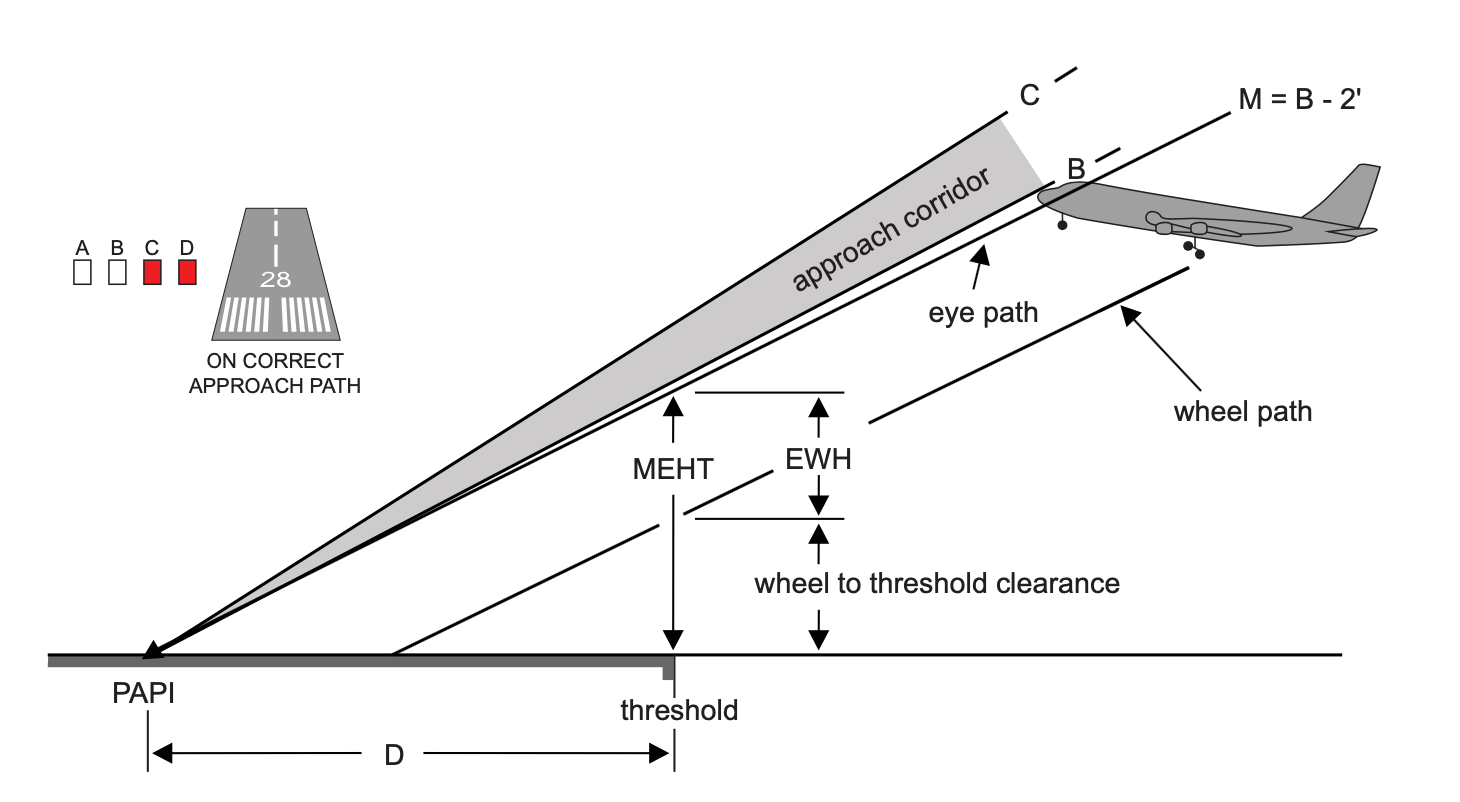Eye to Wheel Height (EWH)
The vertical distance from a pilot’s eyes to the lowest portion of the aircraft in the landing configuration is called the eye-to-wheel height (EWH), and this distance varies from less than 10 feet up to 45 feet for some wide-bodied aircraft, such as the Boeing 747. Consequently, approach slope indicator systems are related to the eye-to-wheel height for critical aircraft, and they provide safe wheel clearance over the threshold when the pilot is receiving the on-slope indication.

Knowing the EWH in the approach configuration is important because, for a particular category of VASIS and aircraft group, there is only a certain amount of wheel clearance from the ground. For example, if your aircraft belongs in the aircraft height group for a P3 PAPI, using a P2 PAPI means having much less wheel clearance at threshold crossing.
Pilots and air operators should ensure that the VASIS type to be used is appropriate to the given aircraft type, based on the EWH for that aircraft. If this information is not already available in the AFM or other authoritative aircraft manuals, the aircraft manufacturer should be contacted.
Categories
VASIS are categorized according to the EWH in the approach configuration, as shown in the tables below. Where a VASIS is given for a published category, it is intended to be useable by all aircraft within the stated EWH group unless otherwise stated.
Visual Approach Slope Indicator (VASI) Categories
The VASI installations are designed according to aircraft height group categories AV, V1, and V2, as indicated in the table below. The greater the value of the EWH in the approach configuration, the farther the VASI is installed upwind from the threshold to provide the appropriate Minimum Eye Height over Threshold (MEHT).
| Category | System | Aircraft Height Group EWH in the Approach Configuration |
|---|---|---|
| AV | AVASI | 0 ft ≤ EWH < 10 ft |
| V1 | VASI | 0 ft ≤ EWH < 10 ft |
| V2 | VASI | 10 ft ≤ EWH < 25 ft |
Precision Approach Path Indicator (PAPI) Categories
PAPI and APAPI installations are designed for aircraft height group categories AP, P1, P2, and P3, as indicated in the table below. The greater the value of the EWH in the approach configuration, the farther the PAPI is installed upwind from the threshold to provide the appropriate MEHT.
| Category | System | Aircraft Height Group EWH in the Approach Configuration |
|---|---|---|
| AP | APAPI | 0 ft ≤ EWH < 10 ft |
| P1 | PAPI | 0 ft ≤ EWH < 10 ft |
| P2 | PAPI | 10 ft ≤ EWH < 25 ft |
| P3 | PAPI | 25 ft ≤ EWH < 45 ft |
